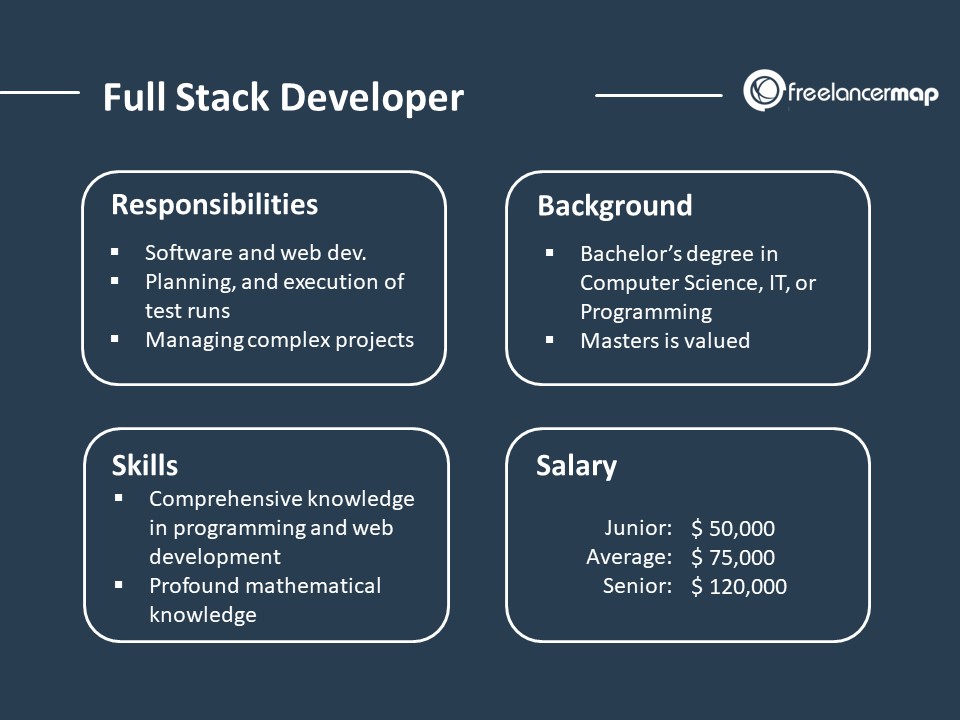Blitz News Digest
Stay updated with the latest trends and insights.
Full-Stack Devs: The Multitaskers of the Tech World
Discover why full-stack devs are the ultimate tech multitaskers and how they master both front-end and back-end development!
How Full-Stack Developers Bridge the Gap Between Frontend and Backend
Full-stack developers play a crucial role in modern software development by bridging the gap between frontend and backend technologies. This unique position allows them to understand how both ends of the application function, enabling them to create seamless and efficient user experiences. Frontend development involves creating the visual elements and interactions that users engage with, while backend development focuses on server-side logic, databases, and application performance. By possessing skills in both areas, full-stack developers can ensure that the two components work harmoniously together.
Moreover, full-stack developers are often responsible for the entire development lifecycle, which includes designing, implementing, and maintaining applications. This all-encompassing expertise not only enhances collaboration within teams but also speeds up project timelines. As they facilitate effective communication between frontend and backend developers, full-stack developers help to streamline workflows. Their versatility allows for quick problem-solving and adaptability, making them an invaluable asset in any technical project.

Essential Skills Every Full-Stack Developer Should Master
In today’s technology-driven world, full-stack developers play a pivotal role in the development of web applications. To excel in this domain, developers must master a diverse array of skills encompassing both front-end and back-end technologies. Key front-end skills include proficiency in HTML, CSS, and JavaScript, which are essential for creating interactive and visually appealing user interfaces. Additionally, familiarity with modern frameworks like React or Angular can significantly enhance a developer's capabilities, making them versatile in responding to various project requirements.
On the back-end side, understanding server-side languages such as Node.js, Python, or Ruby is crucial for building robust applications. Furthermore, full-stack developers should have a solid grasp of database management systems like MySQL or NoSQL databases, enabling them to efficiently handle data storage and retrieval. It is also important to embrace tools for version control, such as Git, and to have a foundational knowledge of APIs and web services. Mastering these essential skills will equip developers to create seamless and functional applications while navigating the complexities of modern web development.
What Makes Full-Stack Developers the Swiss Army Knives of Software Development?
Full-stack developers are often described as the Swiss Army knives of software development due to their versatile skill set that encompasses a broad range of technologies and disciplines. Unlike specialists who focus exclusively on front-end or back-end development, full-stack developers possess the ability to navigate through both layers seamlessly. They are well-versed in various programming languages, frameworks, and databases, enabling them to tackle projects from conception to deployment. This comprehensive expertise allows them to contribute effectively at different stages of the software development lifecycle, making them invaluable assets in any tech team.
Moreover, the adaptability of full-stack developers is a significant advantage in today’s fast-paced tech environment. As projects shift in scope or direction, these developers can pivot quickly, addressing both the user interface and the server-side logic without the need for extensive hand-offs between team members. This capability not only accelerates project timelines but also fosters better communication and collaboration within teams. In a world where technology continues to evolve, having a developer who can wear multiple hats is more crucial than ever, solidifying the full-stack developer’s reputation as the Swiss Army knife of the software development realm.